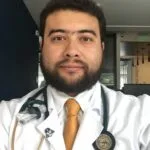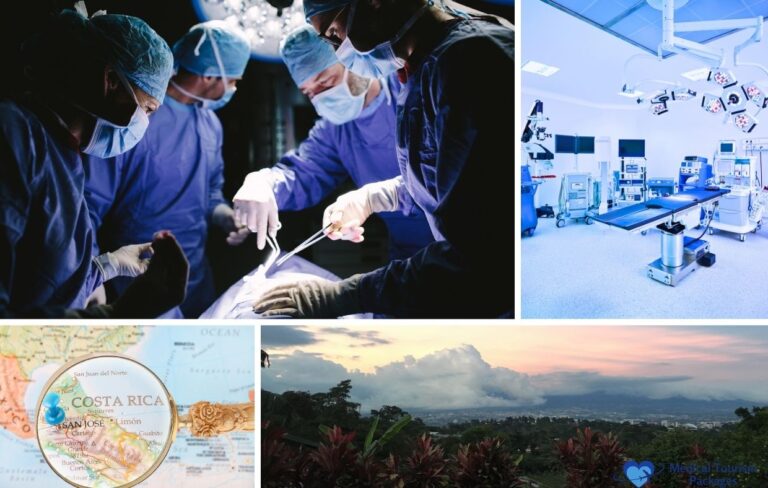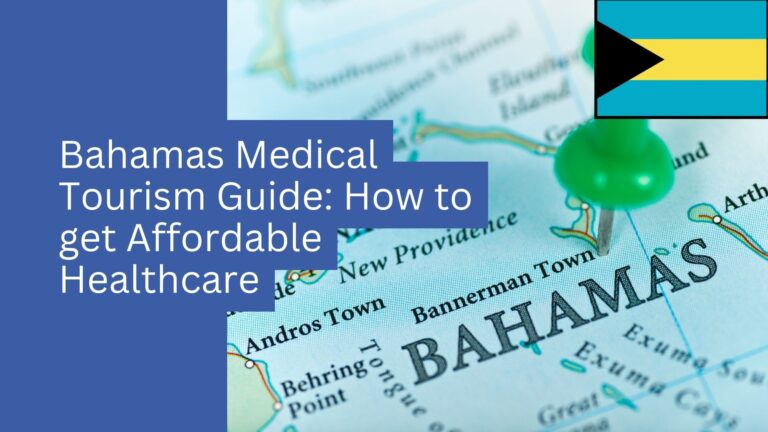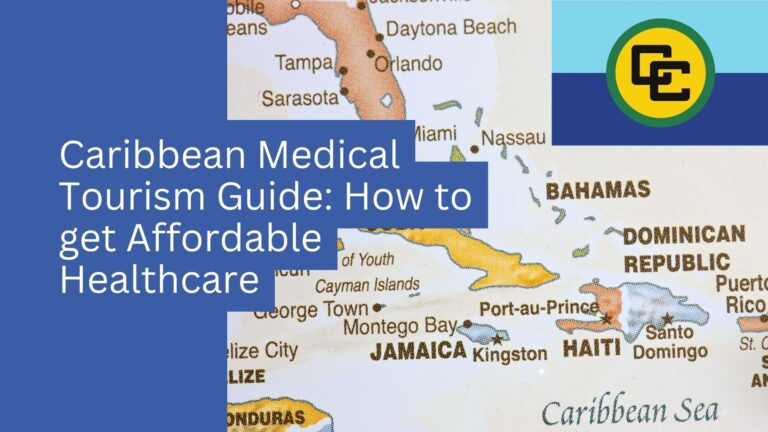Book Appointment Now
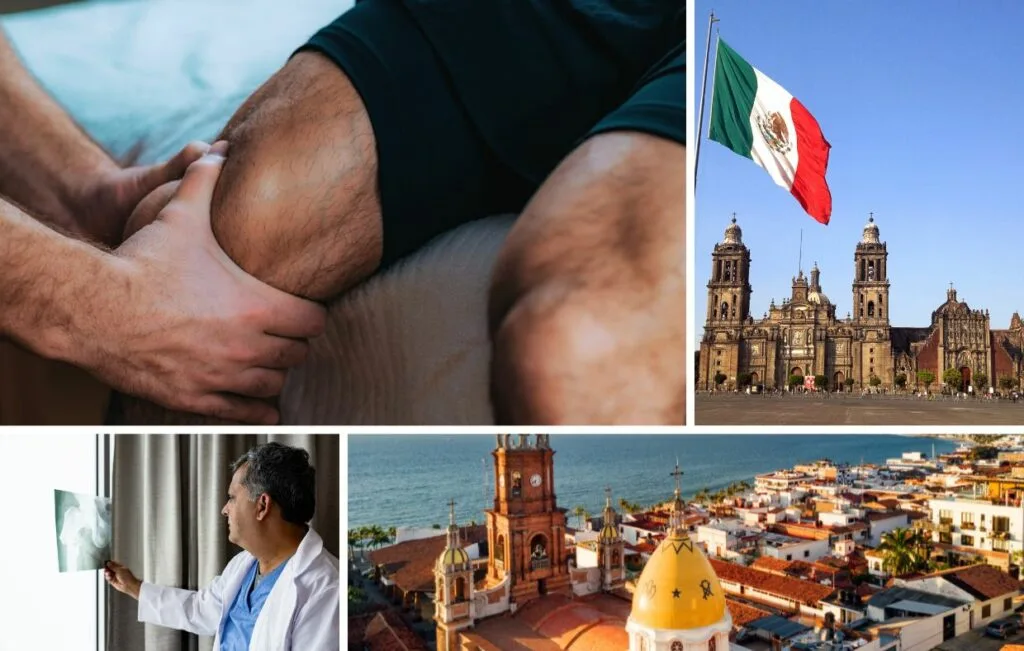
Sports Medicine in Costa Rica: Treatment Options, Costs, and Leading Clinics
Sports injuries don’t wait for convenient timing. You might be dealing with a torn ACL, chronic shoulder pain, or a nagging tendon injury. At home, recovery often means long wait times and steep medical bills. Many athletes and active people are now looking beyond their borders for faster, more affordable care. Costa Rica has become a top destination for sports medicine.
This Central American country offers several advantages. You’ll find board-certified orthopedic surgeons trained in the US and Europe. The medical facilities have modern technology. Treatment costs run 40-70% less than North American prices. You can recover in a tropical setting. These benefits explain why medical tourists choose Costa Rica for arthroscopic surgery, rotator cuff repairs, and regenerative treatments like PRP therapy.
This guide walks you through what Costa Rica offers for sports medicine patients. You’ll learn about common procedures available, what you can expect to pay, how to choose the right clinic, and what the recovery process looks like. Whether you’re considering knee surgery, shoulder repair, or advanced biologics treatment, you’ll find the practical information you need to make an informed decision.
What is Sports Medicine in Costa Rica?
Sports medicine treats injuries from sports and exercise. Doctors in this field help you prevent injuries, diagnose problems, and get treatment. The team includes orthopedic surgeons, physical therapists, rehabilitation specialists, and pain management experts. They work together to help you return to your active lifestyle.
Sports medicine covers many types of injuries. Acute injuries happen suddenly—like ligament tears and fractures. Chronic conditions develop over time—like tendinitis, cartilage damage, and overuse injuries. Treatment options include minimally invasive arthroscopic surgery (small incisions with a camera). You can also get regenerative therapies like PRP (platelet-rich plasma) injections and stem cell treatments.
Costa Rica ranks among the top ten countries globally for medical tourism. The World Health Organization rates Costa Rica’s healthcare system higher than the United States. This reflects the country’s investment in modern medical facilities and doctor training. Most orthopedic specialists in Costa Rica completed fellowships in North America or Europe. Many hold certifications from international medical boards. The country attracts three types of patients: active individuals with recreational injuries, competitive athletes who need faster treatment, and patients with chronic bone and joint problems looking for alternatives to surgery.
Costa Rica offers more than just good doctors. The country sits just 3-5 hours by direct flight from major U.S. cities. This makes it easy to reach for medical travelers. Costa Rica has long-term political stability and well-developed tourism infrastructure. This provides a secure environment for your recovery. San José, the capital city, serves as the main hub for medical services. Top hospitals and specialty clinics are located in the metropolitan area. Other cities like Escazú and Santa Ana have become centers for private medical practice. Coastal cities like Guanacaste offer recovery settings near the beach. You can combine medical care with a natural healing environment.
What are the Leading Sports Medicine Clinics in Costa Rica?
Costa Rica’s top sports medicine facilities are located in and around San José. These accredited hospitals offer complete orthopedic and rehabilitation services. The hospitals have earned JCI (Joint Commission International) accreditation. JCI is the gold standard for international healthcare quality. These hospitals also partner with major medical systems in the United States and Europe. The table below compares three leading hospitals that medical tourists frequently choose for sports medicine treatment.
| Clinic/Hospital Name | Location | Services Offered | Special Features |
|---|---|---|---|
| Hospital CIMA San José | Escazú | Joint replacement, ACL reconstruction, spine surgery, regenerative medicine | JCI accreditation, international affiliations with Baylor Scott & White Health, advanced imaging including 3T MRI |
| Hospital Clínica Bíblica | San José | Orthopedic surgery, sports rehabilitation, arthroscopy | JCI-accredited, high volume specialist departments, multilingual staff |
| Hospital La Católica | Guadalupe | Sports medicine, orthopedic trauma, physical therapy | JCI-accredited, comprehensive rehabilitation services, emergency trauma center |
Who are the Top Sports Medicine Doctors in Costa Rica?
All medical doctors in Costa Rica must have active licenses. The College of Physicians and Surgeons of Costa Rica issues these licenses. This is the national body that oversees doctor credentials and practice standards. Sports medicine specialists complete their medical degree in Costa Rica or abroad. They then do residency training in orthopedic surgery or sports medicine. Many leading doctors pursue additional fellowship training in the United States, Canada, or Europe. They specialize in arthroscopic surgery, joint reconstruction, or regenerative medicine. This international training keeps Costa Rican doctors current with the latest surgical techniques used in North American and European medical centers.
Dr. Oscar Oeding Bermúdez represents the expertise available in Costa Rica’s sports medicine field. He completed specialized training in orthopedic surgery and sports medicine. He has international connections that keep him updated on medical advances from multiple countries. Dr. Oeding has extensive experience across the full range of sports medicine procedures. This includes arthroscopic repairs of the knee and shoulder, complex ligament reconstructions, and cartilage restoration procedures. His practice treats both acute injuries for athletes and chronic bone and joint conditions.
When evaluating sports medicine doctors in Costa Rica, you should verify several key credentials. Check for board certification in orthopedic surgery or sports medicine. Look for fellowship training in relevant specialties. Confirm they have hospital privileges at JCI-accredited facilities. Check membership in international professional organizations like ISAKOS (International Society of Arthroscopy, Knee Surgery and Orthopaedic Sports Medicine). Most top doctors maintain profiles that show their training, publications, and number of procedures performed. Many clinics can provide patient references. They can also connect you with past international patients who can share their experiences.
What Sports Injuries are Most Commonly Treated in Costa Rica?
Costa Rica’s sports medicine facilities handle all types of orthopedic injuries. They have special expertise in conditions that require surgery or advanced rehabilitation care. ACL reconstruction is one of the most common procedures. Surgeons use modern techniques like hamstring or patellar tendon grafts to restore knee stability. Other ligament repairs are also routine—including MCL, PCL, and multi-ligament reconstructions. These help athletes who have complex knee injuries. Shoulder problems are another major treatment category. Rotator cuff tears are especially common among overhead athletes and older active patients. Surgeons use arthroscopic techniques (small incisions with a camera) to repair torn tendons, fix impingement problems, and stabilize shoulders that dislocate.
Meniscus tears and knee wear-and-tear bring many medical tourists to Costa Rica. Treatment options range from arthroscopic meniscus repair to more complex procedures. These include cartilage restoration using microfracture, OATS (moving healthy cartilage to damaged areas), or ACI (growing your own cartilage cells for transplant). Hip and knee joint degeneration is common in middle-aged and older patients. Doctors address this through conservative management or joint replacement surgery when needed. Chronic tendon and ligament injuries are also treated. These include tennis elbow, golfer’s elbow, Achilles tendon problems, and plantar fasciitis. Treatment combines physical therapy, regenerative injections, and surgery if other approaches don’t work.
Spinal conditions that affect active people also fall within sports medicine. These include herniated discs, spinal stenosis (narrowing of the spine), and degenerative disc disease. These conditions limit physical activity or cause pain that radiates down your arms or legs. Treatment ranges from epidural steroid injections and physical therapy to minimally invasive procedures and spinal fusion when needed. Many facilities offer complete rehabilitation programs. These programs address movement problems that contribute to both sudden injuries and chronic overuse conditions. This helps you return to sports with lower risk of getting injured again.
What are the Main Treatment Methods Used in Costa Rica Sports Medicine?
Physical therapy forms the foundation of sports medicine treatment in Costa Rica. You can get it as a standalone treatment or as part of post-surgical recovery. Rehabilitation specialists create individualized therapy programs. These programs address strength problems, limited range of motion, and movement patterns. Post-surgery therapy follows structured timelines. You progress through phases of healing—from initial protection and pain management to gradual loading and sport-specific training. Most major hospitals and clinics offer complete rehabilitation services on-site. This allows your surgeon and physical therapist to coordinate your care throughout recovery.
What are Arthroscopic and Minimally Invasive Surgery Options?
Arthroscopic surgery is the gold standard for many sports injuries. Surgeons diagnose and treat joint problems through small incisions using a camera and specialized instruments. Costa Rican orthopedic surgeons routinely perform ACL reconstruction using modern techniques. These preserve your natural anatomy and help the graft heal properly. Rotator cuff repair fixes torn shoulder tendons using arthroscopic sutures and anchors. Meniscus repair uses special techniques to save healthy cartilage. Beyond arthroscopy, surgeons also perform joint replacement for advanced hip, knee, and shoulder degeneration. They use the same implant systems and surgical methods used in North American hospitals. Spinal fusion procedures for unstable or worn-out spine conditions use minimally invasive approaches. This reduces tissue damage and speeds up recovery.
What is Regenerative Medicine (PRP and Stem Cells)?
Regenerative medicine has become popular in Costa Rica’s sports medicine field. It offers alternatives to surgery for certain chronic conditions. PRP (Platelet-Rich Plasma) therapy concentrates your own growth factors and healing proteins. Doctors then inject them into damaged tendons, ligaments, or arthritic joints to help tissue repair. This treatment shows promise for tennis elbow, patellar tendinitis (jumper’s knee), and early osteoarthritis. Stem cell therapy uses special cells harvested from your bone marrow or fat tissue. These cells are processed and injected into injured areas to promote healing and regeneration. These treatments work well for chronic tendon injuries, cartilage defects, and joint degeneration when you want to avoid or delay surgery.
What Advanced Diagnostic Imaging is Available?
Accurate diagnosis is key to effective treatment planning. Costa Rica’s leading sports medicine facilities have state-of-the-art imaging technology. High-field MRI scanners, including 3 Tesla systems, provide detailed images of soft tissues. This includes ligaments, tendons, cartilage, and labral tissue commonly injured in sports. CT scans offer precise bone detail for fracture assessment and surgical planning. Dynamic ultrasound allows real-time evaluation of tendon and muscle injuries. Many facilities also use fluoroscopy for image-guided injections. This ensures precise needle placement for both treatment and diagnosis. This advanced imaging lets surgeons make definitive diagnoses without exploratory surgery. It also helps them plan surgical approaches with greater precision.
How Much Does Sports Medicine Cost in Costa Rica?
Cost savings are one of the main reasons people choose Costa Rica for sports medicine procedures. Prices in Costa Rica typically run 40-70% lower than the same treatments in the United States. This is true even when you factor in travel and accommodation costs. The savings come from lower overhead costs, different insurance structures, and competitive pricing—not from lower quality of care. The table below compares typical costs for common sports medicine procedures. It shows the substantial savings for self-pay patients and those with high-deductible insurance plans.
| Procedure | US Cost Range | Costa Rica Cost Range | Savings Percentage | Typical Dollar Savings |
|---|---|---|---|---|
| ACL Reconstruction | $12,500–$22,000 | $3,300–$8,900 | 60–75% | $3,600–$13,100 |
| Knee Replacement | $30,000–$50,000 | $8,000–$14,900 | 70–75% | $15,100–$41,100 |
| Hip Replacement | $40,364–$45,000 | $11,500–$15,000 | 66–70% | $26,764–$31,400 |
| Rotator Cuff Repair | $9,000–$13,500 | $5,000–$8,900 | 34–50% | $600–$8,500 |
| Spinal Fusion | $110,000 | $9,500–$15,700 | Up to 86% | $94,300–$100,500 |
| Meniscus Repair | Varies | Starting at $4,900 | — | — |
What is the Sports Medicine Treatment Process in Costa Rica?
Your sports medicine journey in Costa Rica begins with scheduling an initial consultation. This is typically arranged one to two weeks before your arrival. You’ll submit your medical history, previous imaging results, and details about your injury or condition. Many clinics conduct virtual pre-assessments to review your case. They determine the best treatment approach. This advance planning ensures your medical team is prepared when you arrive.
Upon arrival, you’ll get a complete evaluation. This includes diagnostic imaging like MRI, X-rays, or ultrasound if needed. Your sports medicine specialist will review these results. They’ll develop a customized treatment plan for your specific condition. The plan outlines your procedure type, expected hospital stay, and rehabilitation timeline. Minor procedures like PRP injections or arthroscopic surgeries often need little or no overnight stay. More complex reconstructions may need one to three days in the facility.
The rehabilitation phase begins right after your procedure. Physical therapists who specialize in sports recovery will guide you. Your rehab program includes in-clinic sessions and exercises you’ll continue at home. Most patients stay in Costa Rica for one to two weeks after the procedure. This depends on treatment complexity. Your medical team schedules follow-up appointments during this time to monitor healing and adjust your recovery plan.
Before you leave, you’ll receive detailed return-to-activity instructions. You’ll also get a schedule for remote follow-up care. Your clinic will coordinate virtual check-ins at key recovery points. These are typically at two weeks, six weeks, and three months after treatment. This structured approach helps you progress safely back to your sport or active lifestyle. It also maintains continuity of care with your Costa Rican medical team.
How Long Should You Stay in Costa Rica for Sports Medicine Treatment?
Your stay duration in Costa Rica depends on your specific procedure and recovery needs. Most sports medicine patients stay in the country for two to four weeks. This allows you to complete initial recovery and early rehabilitation sessions. This timeline lets your medical team monitor healing, manage any complications, and make sure you’re stable before international travel. Your surgeon will give you a personalized recommendation based on your procedure complexity and overall health.

| Procedure | Hospital Stay | Minimum Stay in Costa Rica | Physical Therapy Frequency | Full Recovery Timeline |
|---|---|---|---|---|
| Joint Replacement (Hip/Knee) | 2-3 days | 3-4 weeks | 3-5 sessions/week | 3-6 months |
| Spinal Fusion | 3-5 days | 3-4 weeks | Varies by protocol | 3-4 months |
| ACL Reconstruction | 1-2 days | 2-3 weeks | 3-5 sessions/week | 6-9 months |
What are the Success Rates for Sports Medicine Procedures in Costa Rica?
Costa Rican sports medicine facilities report success rates that meet or exceed international standards across major orthopedic procedures. These outcomes come from experienced surgeons, modern equipment, and strict quality standards maintained by JCI-accredited hospitals. Success rates are measured by patient satisfaction, functional improvement, and complication rates tracked through standardized follow-up. Your specific success probability depends on several factors. These include your age, overall health, how well you follow rehabilitation protocols, and procedure complexity.
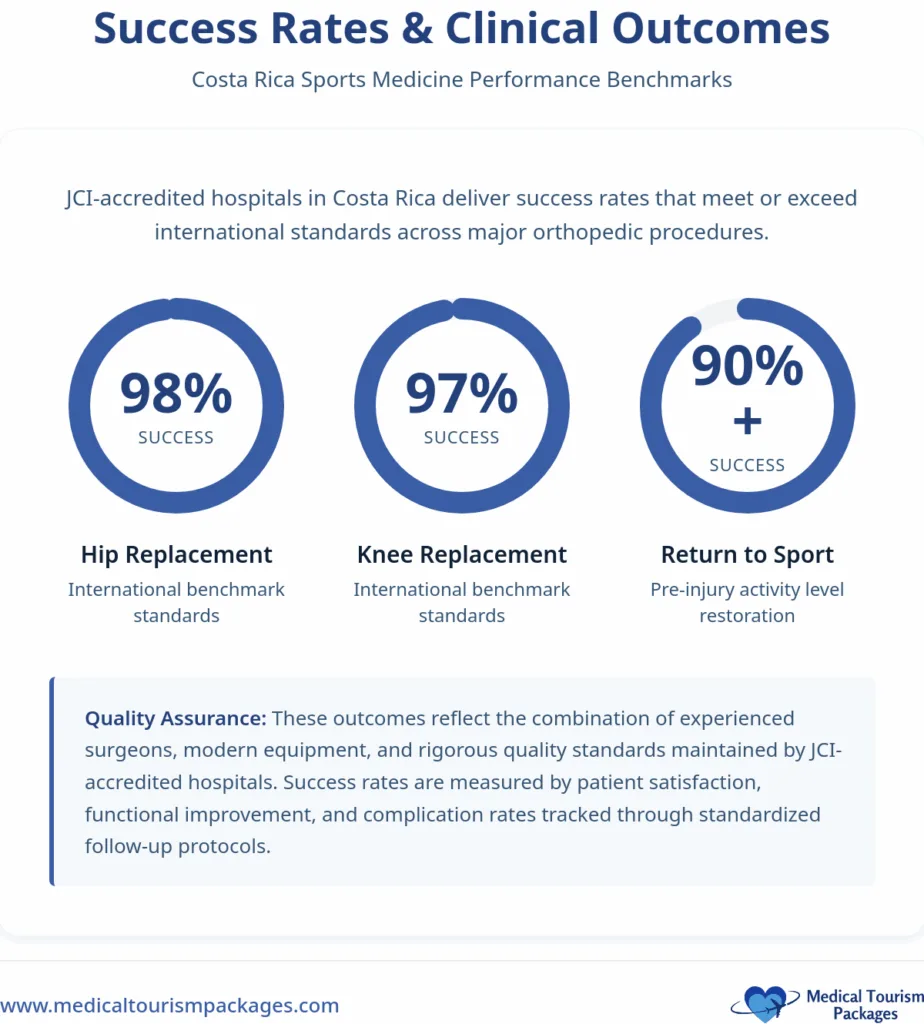
| Procedure | Success Rate | Benchmark Comparison |
|---|---|---|
| Hip Replacement | 98% | International benchmark standards |
| Knee Replacement | 97% | International benchmark standards |
| Return to Sport | 90%+ | Pre-injury activity level restoration |
How to Choose the Right Sports Medicine Clinic in Costa Rica?
Selecting the right sports medicine clinic requires careful evaluation. You need to check credentials, experience, and patient support services. Use this checklist to assess potential facilities:
- Verify JCI accreditation status – Confirm the hospital or clinic holds current JCI (Joint Commission International) accreditation. This validates they follow global safety and quality standards.
- Confirm doctor credentials and international affiliations – Check that your surgeon completed training at recognized institutions. Verify they maintain memberships in international orthopedic or sports medicine associations.
- Request procedural experience data – Ask how many times your surgeon has performed your specific procedure. Ask about their complication rates and patient outcomes.
- Ask about facility technology and equipment – Make sure the clinic uses modern diagnostic imaging, surgical equipment, and rehabilitation technology. It should be comparable to leading facilities worldwide.
- Confirm bilingual staff availability – Verify that doctors, nurses, and administrative staff speak English fluently. This prevents communication barriers during your care.
- Request itemized cost quotes – Get detailed pricing breakdowns. These should include surgeon fees, hospital charges, anesthesia, medications, physical therapy sessions, and follow-up care.
- Check patient testimonials – Review feedback from previous international patients. Pay attention to comments about surgical outcomes, staff responsiveness, and overall medical tourism experience.
What are the Advantages of Sports Medicine in Costa Rica?
Costa Rica offers several benefits for medical tourists seeking sports medicine treatment:
- 60-86% cost savings vs. U.S. – Sports medicine procedures cost significantly less than the same treatments in the United States. This is true even when you include travel and accommodation expenses.
- JCI-accredited facilities – Multiple Costa Rican hospitals maintain JCI (Joint Commission International) accreditation. This ensures care quality meets strict international healthcare standards.
- 1-2 week surgical scheduling – You can schedule consultations and procedures within one to two weeks. This avoids the months-long wait times common in other countries.
- English-proficient medical teams – Doctors, nurses, and support staff speak fluent English. This eliminates language barriers throughout your treatment and recovery.
- US dollar currency – Costa Rica widely accepts U.S. dollars alongside the local colón. This simplifies financial transactions and eliminates currency exchange concerns.
- Close proximity to U.S. – Direct flights from major U.S. cities take only three to five hours. This makes travel convenient for patients and accompanying family members.
What are the Disadvantages of Sports Medicine in Costa Rica?
Costa Rica sports medicine treatment has some limitations you should consider:
- Mandatory 3-4 week post-operative stay required – Most procedures require an extended stay in Costa Rica for initial recovery monitoring and physical therapy sessions. You need this before you can safely travel home.
- Wide price variance requiring detailed research – Treatment costs differ significantly between facilities and providers. You need to do thorough price comparison and verification to avoid unexpected expenses.
Can International Patients Access Sports Medicine in Costa Rica?
Costa Rica actively welcomes international patients for sports medicine treatment. The country has streamlined processes for medical tourists. You need only a valid passport for entry. Most countries including the United States do not require visas for stays under 90 days. Bring your complete medical records. This includes previous imaging results, diagnostic reports, and medication lists. These documents help your Costa Rican medical team understand your condition and plan the right treatment.
Costa Rican sports medicine facilities employ bilingual staff to support international patients throughout their care journey. Doctors, nurses, patient coordinators, and administrative personnel speak fluent English. They understand the unique needs of medical tourists. Many clinics assign dedicated patient coordinators. They handle appointment scheduling, treatment explanations, accommodation arrangements, and transportation logistics.
Major U.S. cities offer direct flights to San José’s Juan Santamaría International Airport. Flight times range from three to five hours depending on your departure location. This convenient access allows family members to accompany you easily. It also makes return visits for follow-up care practical. Costa Rica’s well-developed medical tourism infrastructure includes airport pickup services, recovery accommodations near hospitals, and complete support that simplifies your entire treatment experience.
Is Sports Medicine in Costa Rica Right for You?
Yes, sports medicine in Costa Rica is right for you if you’re facing high treatment costs or long wait times. You’ll save 60-86% compared to U.S. prices without compromising quality. JCI-accredited facilities deliver international-standard care. Experienced surgeons trained at leading institutions provide outcomes comparable to top medical centers worldwide. You can schedule treatment within one to two weeks—perfect for athletes and active individuals who need faster solutions.
Costa Rica excels in joint replacement surgeries, ACL reconstruction, and chronic sports injury treatment. The country’s regenerative medicine programs include PRP therapy and stem cell treatments. Success rates of 97-98% for major joint replacements and 90%+ return-to-sport rates prove the effectiveness of Costa Rican sports medicine.
Ready to explore your sports medicine options in Costa Rica? Medical Tourism Packages connects you with top JCI-accredited hospitals, experienced surgeons, and complete support from consultation through recovery. We handle hospital selection, doctor credentials verification, treatment planning, accommodation arrangements, and post-operative care coordination. Schedule your free consultation today to discuss your specific needs and receive a personalized treatment plan with transparent pricing.
Frequently Asked Questions About Sports Medicine in Costa Rica
How much cheaper is sports medicine in Costa Rica compared to the United States?
Sports medicine procedures in Costa Rica typically cost 60–86% less than in the U.S. For example: ACL reconstruction is ~$3,300–$8,900 vs. $12,500–$22,000; knee replacement is ~$8,000–$14,900 vs. $30,000–$50,000; hip replacement is ~$11,500–$15,000 vs. $40,364–$45,000; and spinal fusion is ~$9,500–$15,700 vs. about $110,000.
Do these savings still hold after travel and lodging?
Yes. Even when you add airfare, accommodation for 2–4 weeks, meals, and local transport, the total cost is usually far below comparable U.S. prices for the same procedures.
What do quoted prices usually include, and what extra costs should I plan for?
Quotes typically cover surgeon fees, hospital charges, anesthesia, basic medications, and initial follow-ups. Budget separately for flights, accommodation, meals, local transport, home prescriptions, physical therapy, pre-op imaging (if needed), and travel insurance. Some clinics offer all-inclusive packages—ask for an itemized breakdown.
Are Costa Rican sports medicine doctors qualified for complex procedures?
Yes. Physicians must hold active licenses with the College of Physicians and Surgeons of Costa Rica. Many orthopedic specialists have fellowships in the U.S., Canada, or Europe, hold international certifications, and are members of groups like ISAKOS. They use the same techniques, protocols, and implant systems as North American hospitals.
Which Costa Rican hospitals are best for sports medicine?
Top JCI-accredited options include: Hospital CIMA San José (Escazú) with joint replacement, ACL, spine, regenerative medicine, and advanced imaging like 3T MRI; Hospital Clínica Bíblica (San José) with high-volume orthopedic surgery and multilingual teams; and Hospital La Católica (Guadalupe) known for sports medicine, orthopedic trauma, and comprehensive rehab. These centers maintain international partnerships for quality assurance.
Will my insurance cover treatment in Costa Rica?
Most U.S. plans don’t cover elective procedures abroad. Some international policies or employer plans may allow partial reimbursement. Verify coverage and required documentation with your insurer in advance. Even without coverage, the 60–86% savings often make self-pay a strong option; facilitators can help with paperwork for any reimbursement.
How long should I plan to stay in Costa Rica after surgery?
Typical stays: hip/knee replacements—2–3 days in hospital plus 3–4 weeks in-country for rehab (PT 3–5x/week); spinal fusion—3–5 days in hospital plus 3–4 weeks local recovery; ACL reconstruction—1–2 days in hospital plus 2–3 weeks of in-country rehab. Your surgeon will tailor timing to your procedure and health.
What if I have complications after I return home?
Clinics typically schedule remote follow-ups (around 2 weeks, 6 weeks, and 3 months) and coordinate with your local doctors. For urgent issues, seek care at your local hospital; your Costa Rican team can supply records and surgical reports. Comprehensive travel insurance is essential, and some cases may require returning for follow-up care.
Can I combine tourism with my recovery?
Yes—lightly and only with your surgeon’s clearance. Focus on rest and early PT for the first 1–2 weeks. After ~2–3 weeks, consider gentle sightseeing or recovery-friendly settings (e.g., accessible beach or mountain towns). Avoid strenuous or adventure activities until you’re fully cleared.
How should I choose a clinic or package?
Prioritize JCI-accredited hospitals with experienced sports medicine teams. Request an itemized quote detailing what’s included (surgery, anesthesia, hospital stay, follow-ups) and what’s not (PT, meds, lodging, transfers). Ask about surgeon training, implant brands, rehab plans, virtual follow-ups, and protocols for managing international patient complications.
